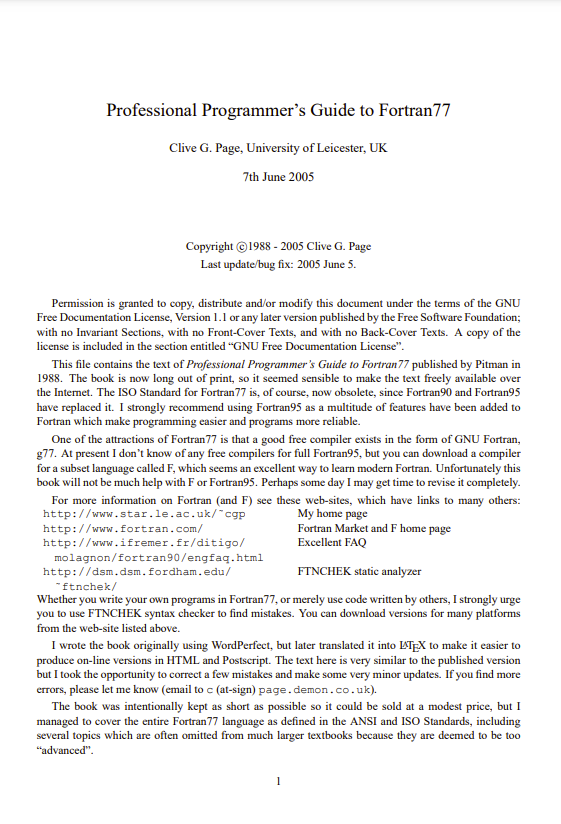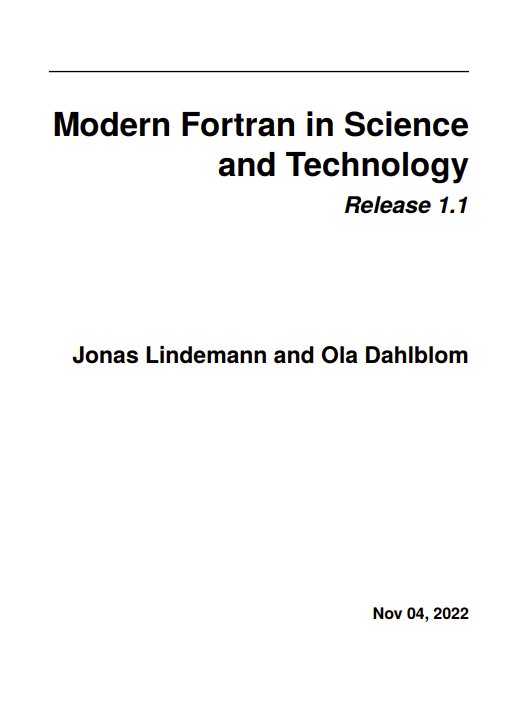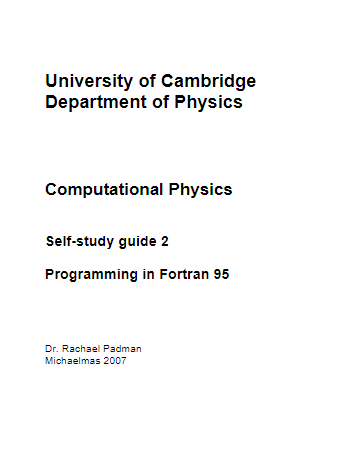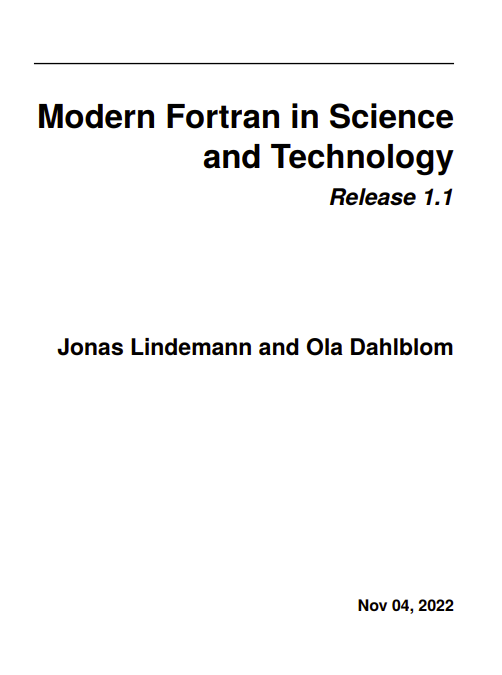What Is Fortran?
Fortran is the most widely used programming language in the world for numerical applications. It has achieved this position partly by being on the scene earlier than any of the other major languages and partly because it seems gradually to have evolved the features which its users, especially scientists and engineers, found most useful. In order to retain compatibility with old programs, Fortran has advanced mainly by adding new features rather than by removing old ones. The net result is, of course, that some parts of the language are, by present standards, rather archaic: some of these can be avoided easily, others can still be a nuisance.
This section gives a brief history of the language, outlines its future prospects, and summarises its strengths and weaknesses.
1.1 Early Development
Fortran was invented by a team of programmers working for IBM in the early nineteen-fifties. This group, led by John Backus, produced the first compiler, for an IBM 704 computer, in 1957. They used the name Fortran because one of their principal aims was “formula translation”. But Fortran was in fact one of the very first high-level language: it came complete with control structures and facilities for input/output. Fortran became popular quite rapidly and compilers were soon produced for other IBM machines. Before long other manufacturers were forced to design Fortran compilers for their own hardware. By 1963 all the major manufacturers had joined in and there were dozens of different Fortran compilers in existence, many of them rather more powerful than the original.
All this resulted in a chaos of incompatible dialects. Some order was restored in 1966 when an American national standard was defined for Fortran. This was the first time that a standard had ever been produced for a computer programming language. Although it was very valuable, it hardly checked the growth of the language. Quite deliberately the Fortran66 standard only specified a set of language features which had to be present: it did not prevent other features being added. As time went on these extensions proliferated and the need for a further standardization exercise became apparent. This eventually resulted in the current version of the language: Fortran77.
1.2 Standardization
One of the most important features of Fortran programs is their portability, that is the ease with which they can be moved from one computer system to another. Now that each generation of hardware succeeds the previous one every few years, while good software often lasts for much longer, more and more programs need to be portable. The growth in computer networks is also encouraging the development of portable programs.
The first step in achieving portability is to ensure that a standard form of programming language is acceptable everywhere. This need is now widely recognised and has resulted in the development of standards for all the major programming languages. In practice, however, many of the new standards have been ignored and standard-conforming systems for languages like Basic and Pascal are still very rare.
Fortunately Fortran is in much better shape: almost all current Fortran systems are designed to conform to the standard usually called Fortran77. This was produced in 1977 by a committee of the American National Standards Institute (ANSI) and was subsequently adopted by the International Standards Organisation (ISO). The definition was published as ANSI X3.9-1978 and ISO 1539-1980. The term “Standard Fortran” will be used in the rest of this book to refer to mean Fortran77 according to this






